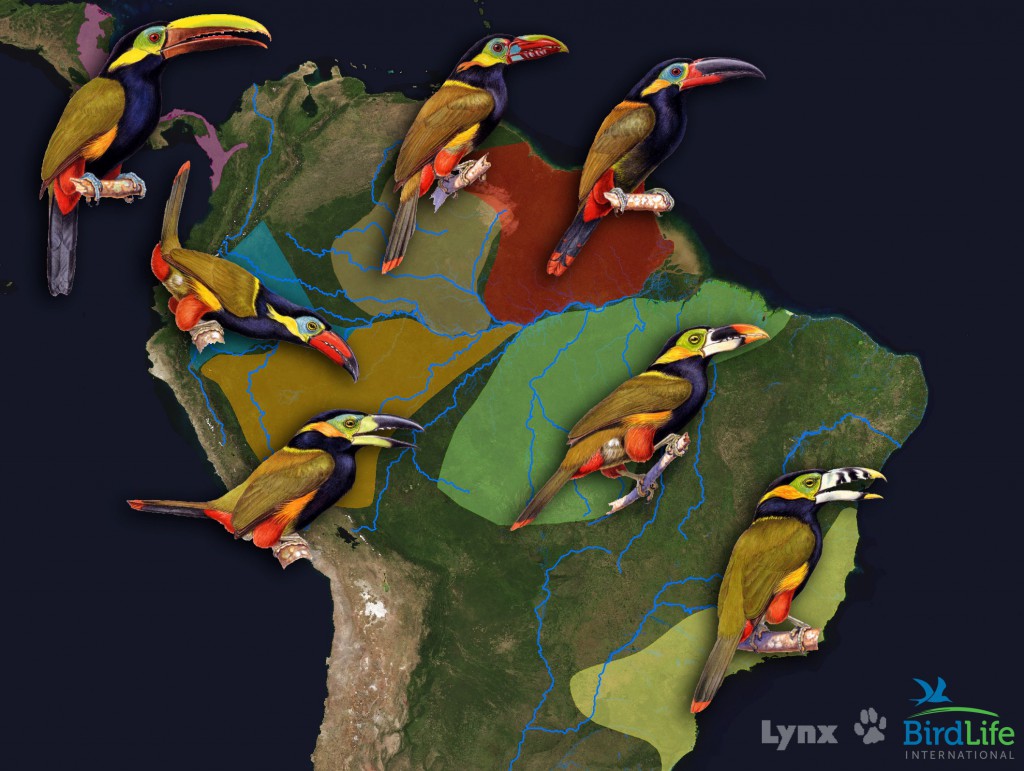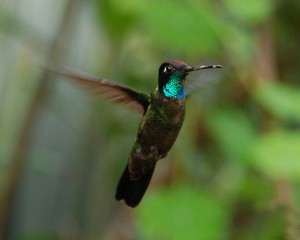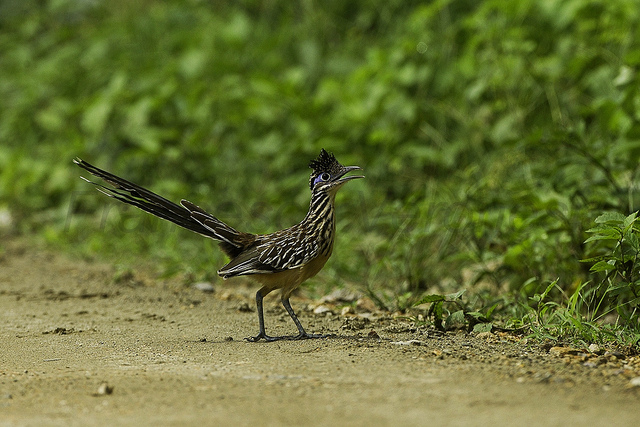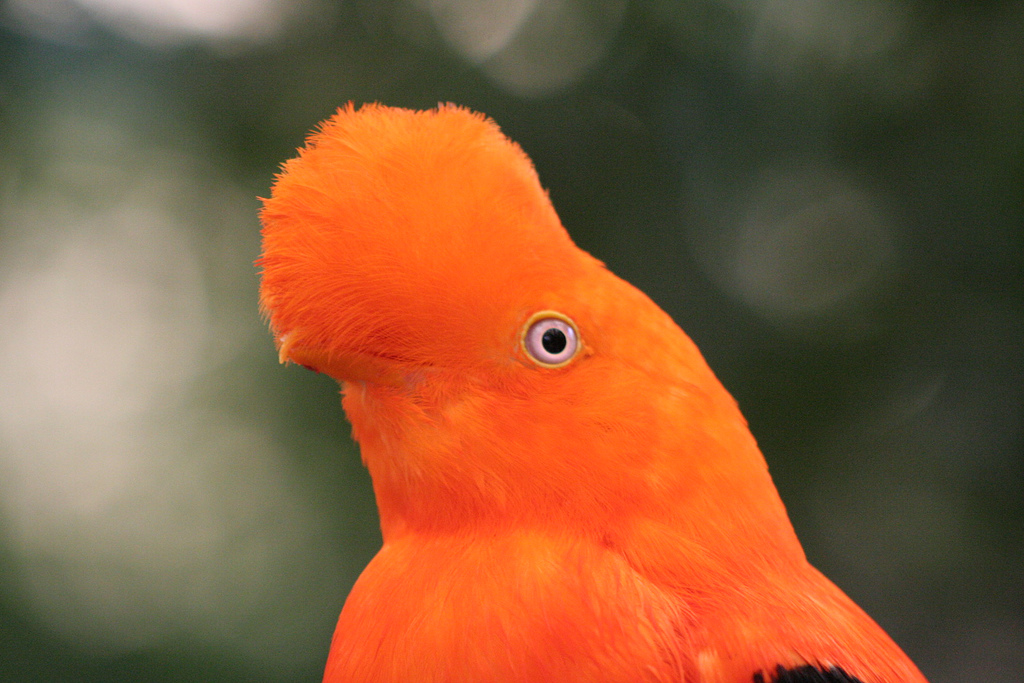To Keep Moving is To Live
 We’ve all seen the scenario in our high school biology textbooks. A single population of fish shares a large Pond. But then something drastic happens in the landscape. Perhaps a drought occurs, and the large Pond partially dries up to leave two smaller ponds separated from each other by a hill or expanse of higher, dry land. If this separation lasts long enough, combining the fish from pond A and pond B produces an interesting effect – the fish can no longer interbreed.
We’ve all seen the scenario in our high school biology textbooks. A single population of fish shares a large Pond. But then something drastic happens in the landscape. Perhaps a drought occurs, and the large Pond partially dries up to leave two smaller ponds separated from each other by a hill or expanse of higher, dry land. If this separation lasts long enough, combining the fish from pond A and pond B produces an interesting effect – the fish can no longer interbreed.
But why? Perhaps the conditions in pond A during the length of the separation were different than the conditions in pond B, and, in a feat of evolution before our very eyes, the fish in pond A and pond B differentiate into distinct species. And if these species can’t interbreed, then even if the waters rise and the pond becomes the single Pond it used to be, our two different species of fish remain. Hello Darwin.
This type of landscape-change-driven speciation (the formation of distinct species of a once common population, or ancestor, due to landscape change) has been previously credited for the formation of a vast number of different bird species in the Neotropics, the most species-rich region of the world. As violent uplifting, faulting and folding processes in underlying tectonic plates produced the highly various landscapes of the Andes mountain range in South America, ancestral populations were theoretically forced and shaped into different habitats, separated by isolated forests, rivers and elevation. According to the landscape-change-driven speciation hypothesis, also referred to as the vicariance model, drastic changes in the landscape fragmented the distributions of Neotropical birds previously living in overlapping areas, creating new and divergent species. Evidence supporting this mode of species formation includes the finding that many “[n]eotropical lineages originated during time periods associated with major reconfigurations of the landscape, presumably signifying a shared response to landscape history.”
But what if a different model of diversification in the Neotropics altogether was responsible for the formation of a vast number of different bird species? According to this model, it’s not that the landscape changes don’t have an effect, but it’s that these changes have an indirect effect. The primary driver of speciation in this alternative model is movement.
Movement? That’s right. Different bird lineages have different abilities to disperse in a varied landscape, perhaps because the climate or habitat they prefer. Brian Tilston Smith and Robb T. Brumfield at the LSU Museum of Natural Science in Baton Rouge, Louisiana, along with colleagues, analyzed 27 different lineages of Neotropical birds for a study published online at Nature.com on September 10, 2014. They found that speciation of Neotropical birds is linked more directly to the age of a bird lineage and its ability to disperse through a landscape than to landscape changes themselves. They also found that most Neotropical bird speciation occurred during the Pleistocene, long after the landscape changes that produced the Andes Mountains and the Amazonian river system.
"Speciation biologists have long been trying to link speciation with historical landscape changes like glaciers, mountain uplift and formation of rivers," said Brumfield. "It's nearly impossible to do with many organisms if there is no fossil data that tells us when and where a species occurred in the past. Distributions can change on the scale of a human lifetime, yet much of the biogeography literature assumes distributions have been more or less as they are today for millions of years. It's hard for me to make that assumption. Instead of trying to link speciation with these historical landscape changes, our research focuses on things we can understand about the process: the tempo of the formation of new species, their relative timing, and how natural history influences these rates."
Smith, Brumfield and colleagues found that species diversity usually increases with the age of the bird lineage. Older bird lineages have had more time to disperse and potentially move across geographical barriers like gaps between forests, mountains or rivers – leading to formation of new species in different locations. Species diversity also increases for lineages of birds living in the forest understorey as opposed to tree canopy lineages, where canopy birds can disperse farther and wider in the landscape. Understorey bird lineages, which often don’t travel as far and wide, often end up isolated and thus quickly diverge into distinct species.
According to Brumfield, there were three big signals in their data that pointed away from a vicariance or landscape-change-based model of species formation. First, the number of species within a lineage increased simply with the amount of time the lineage had existed in the landscape. Second, lineages that were not as mobile tended to accrue more species. And third, most speciation occurred in a static landscape, as movements of birds across geographic barriers like rivers produced geographical isolation and the formation of new species.
In other words, the landscape changes may provide a platform for the formation of distinct species, but whether, how and when this speciation occurs seems to depend on how different birds move and disperse, and what specific habitats and climate conditions they prefer.
“The widely accepted vicariance model is seductively clean and simple,” said Dr. James Van Remsen, John S. McIlhenny Distinguished Professor of biological sciences & Curator of Birds at the LSU Museum of Natural Science. “However, [Smith, Brumfield and colleagues’] data show none of the signal that would support that model. Instead, their data support a leading role for differences in dispersal ability in birds in explaining differences in genetic differentiation. The dispersal abilities of tropical birds have been chronically underestimated.”
It seems that previous researchers have underestimated the movement of tropical birds as a key factor in the development of new species. In other words, to move is to live, and to move is to potentially create new species.
According to Remsen, the vicariance view "was almost doomed from the start" - it assumed that movement through and between landscapes was nearly irrelevant to speciation. "That might work for salamanders and a few other groups with terrible dispersal," Remsen said, "but not at all for birds, bats, insects, and plants with vagile [free to move about] seeds." Where might the vicariance model explain the formation of new species, then? "Islands in water, where the water itself, especially salt water, really imposes a hard barrier for many groups," said Remsen. So the original Galapagos islands finches might still owe their divergent beaks to a landscape-change-based model of speciation.
What does this all mean, though? For one, the process of new species formation itself depends on dispersal or movement paths that can lead to geographic isolation. For example, if there is no rainforest left on either side of a large river, then the opportunity for movement across the river is gone, and thus the speciation process in that location is 'extinct'. The river's physical barrier no longer provides a platform for the potential formation of new bird species. Deforestation, climate change, or any other factor that removes movement opportunities threatens the formation of new species.
"This may all be moot though, because speciation itself can take a long time, perhaps a million years or so," Brumfield said. "This is much slower than the rate of habitat change due to climate change and other forces."






